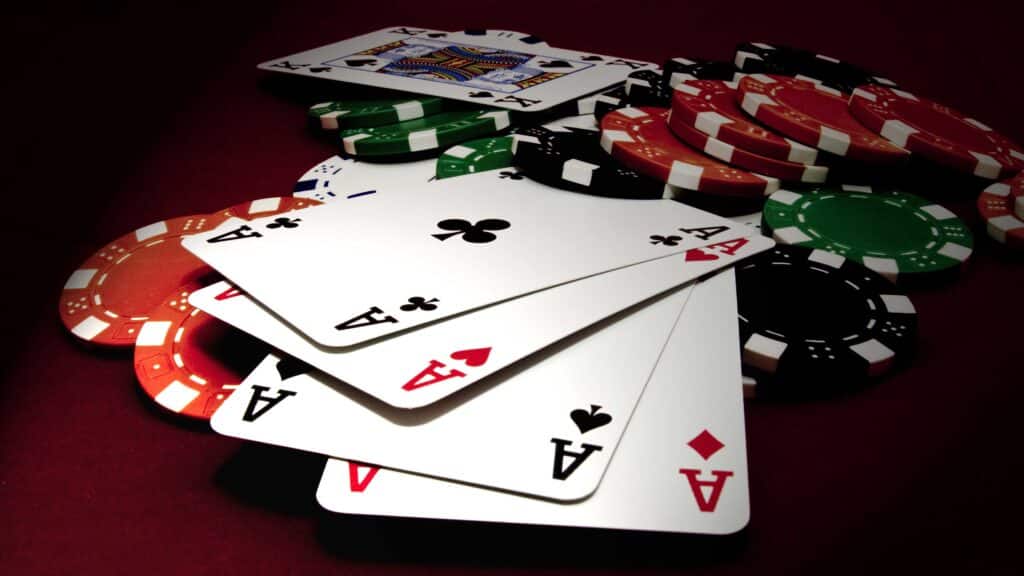In the intricate world of blackjack, where strategy and chance intertwine, understanding the subtle yet powerful influence of deck penetration is paramount for any serious gambler looking to enhance their edge; this article delves deep into deck penetration, exploring its crucial role in blackjack strategy and how it significantly impacts your odds and potential for profit.
Understanding Deck Penetration in Blackjack
Deck penetration in blackjack refers to how far into a deck of cards the dealer deals before reshuffling. It's expressed as a percentage or fraction of the deck dealt. For example, if a dealer uses an 8-deck shoe and deals through 4 decks before reshuffling, the deck penetration is 50%. This seemingly simple factor is a cornerstone of blackjack strategy, particularly for card counters, but also relevant for any player aiming to make informed decisions at the table.
Casinos use different levels of deck penetration as a way to manage the game's volatility and their potential exposure to skilled players, especially card counters. The less of the deck that is dealt, the more frequently the cards are shuffled, which in turn makes it harder for players to track card values and adjust their bets and playing strategies effectively.
Why Deck Penetration Matters
The significance of deck penetration lies in its direct impact on the game's probabilities. Blackjack is a game of dependent events – the cards dealt in previous hands affect the composition of the remaining deck and, therefore, the likelihood of future cards. As more cards are dealt (deeper penetration), the composition of the undealt cards deviates further from the initial, balanced deck.
For players using basic strategy, deeper deck penetration provides more opportunities for streaks of favorable or unfavorable cards, leading to potentially larger swings in winnings or losses. For card counters, deck penetration is even more critical. Card counting systems rely on tracking the ratio of high cards (10s, Jacks, Queens, Kings, Aces) to low cards (2s through 6s) remaining in the deck. Deeper penetration allows card counters to get a more accurate assessment of this ratio and to adjust their betting and playing decisions accordingly to exploit imbalances.
Impact on House Edge and Player Advantage
The house edge in blackjack is not fixed; it fluctuates based on the rules of the game and, crucially, the deck penetration. With perfect basic strategy, the house edge in a typical blackjack game is already relatively low, often around 0.5% to 1%. However, this edge can shift to the player's advantage under certain conditions, and deck penetration is a key factor in creating these conditions.
Deeper penetration generally favors the player, especially card counters. As more low cards are dealt, the proportion of high cards increases in the remaining deck. This is beneficial for players because high cards improve the odds of blackjack (player gets paid 3:2 on blackjack) and doubling down and splitting opportunities, while also increasing the likelihood of dealer busts when they are forced to hit stiff hands (12-16). Conversely, shallower penetration and frequent shuffling reduce these opportunities, making the game more closely align with the initial house edge.
It's important to note that for a basic strategy player (not counting cards), the effect of deck penetration is less pronounced but still present. Deeper penetration can lead to slightly more variance in outcomes, but it doesn't inherently shift the overall odds in their favor as dramatically as it does for a card counter. However, understanding deck penetration can still help basic strategy players appreciate the ebb and flow of the game and the potential for hot or cold streaks.
Measuring and Estimating Deck Penetration
Casinos employ various methods to control and indicate the deck penetration in their blackjack games. In shoe games (games using multiple decks dealt from a dealing shoe), a cut card is typically used. This is a colored plastic card inserted into the deck stack. When the dealer reaches the cut card, it signals the end of the dealing shoe, and a reshuffle is initiated. The position of the cut card determines the deck penetration.
Players can estimate deck penetration by observing the placement of the cut card in relation to the total number of decks in the shoe. For instance, in an 8-deck shoe, if the cut card is placed approximately one deck from the bottom, it implies that about 7 out of 8 decks, or 87.5% penetration, will be dealt. In reality, penetration is rarely this deep, with casinos often aiming for something between 60% and 75% to balance game speed and risk.
For hand-dealt games (single or double-deck games dealt directly by the dealer), deck penetration is often determined by dealer procedure and casino policy. Dealers might be instructed to reshuffle after a certain number of rounds or when the deck visibly thins out. Estimating penetration in these games can be more subjective, but observing how many cards are discarded after each round and how frequently the dealer reaches for a new deck can provide some clues.
Deck Penetration and Card Counting Strategies
For card counters, deck penetration is not just a factor; it's a fundamental requirement for profitable play. Card counting systems are designed to exploit the changing odds as cards are dealt, and this exploitation becomes more effective with deeper penetration. The more cards dealt, the more information a counter has and the more confidently they can act on the count.
Different card counting systems have varying levels of sensitivity to deck penetration. Simpler, level-one counting systems (like Hi-Lo) can still be effective with reasonable penetration (e.g., 60-75%). More complex, multi-level systems (like Uston Advanced Plus/Minus) are designed to extract even greater advantage, but often require deeper penetration to justify their complexity and effort. However, even the most sophisticated counting system loses its edge if the deck penetration is too shallow (e.g., less than 50%), as the frequent reshuffles prevent significant card imbalances from developing.
A key metric for card counters is "rounds per shuffle" or "hands per shuffle." This directly reflects the deck penetration in practical terms. A game with more hands dealt per shuffle offers more opportunities for card counting to become effective. Card counters often look for games with higher rounds per shuffle as a primary criterion for game selection.
Choosing Games Based on Deck Penetration
For advantage players and informed gamblers, understanding deck penetration is crucial for game selection. When choosing a blackjack table, consider the following related to deck penetration:
- Number of Decks: Generally, games with fewer decks (single or double-deck) can offer better potential penetration in hand-dealt formats compared to multi-deck shoe games, although rules and casino procedures vary widely.
- Cut Card Placement: In shoe games, visually assess the cut card placement. A cut card placed deeper in the shoe indicates better penetration. Be wary of games where the cut card is placed very near the top of the shoe.
- Dealer Procedures: Observe dealer routines. Do they seem to reshuffle frequently? In hand-dealt games, how many rounds are typically dealt before a reshuffle? Faster reshuffles mean shallower penetration.
- Game Rules in Conjunction with Penetration: Favorable rules (like surrender, dealer standing on soft 17, blackjack payouts of 3:2) become even more valuable with good deck penetration. Conversely, unfavorable rules (like 6:5 blackjack payouts, dealer hitting on soft 17) are exacerbated by shallow penetration.
It's a balancing act. A single-deck game might offer the best theoretical penetration, but if the rules are unfavorable (like 6:5 blackjack) and the penetration is still shallow in practice, it might be less appealing than a double-deck game with better rules and slightly deeper, more consistent penetration.
Deck Penetration in Online and Live Dealer Blackjack
Deck penetration considerations extend to online and live dealer blackjack, although they manifest slightly differently. In standard online computer-generated blackjack games, each hand is typically dealt from a freshly shuffled virtual deck. This means the deck penetration is effectively zero for each hand, rendering card counting strategies useless in most standard online formats.
However, live dealer online blackjack games, which feature real dealers and physical cards streamed online, can offer varying degrees of deck penetration. Some live dealer casinos may use shallower penetration to mimic land-based casinos and deter counters, while others might offer deeper penetration to attract players seeking a more authentic and potentially advantageous game. Players interested in live dealer blackjack should inquire about or observe the game to estimate the typical deck penetration offered.
The Psychological Aspect of Deck Penetration
Beyond the mathematical implications, deck penetration also has a psychological impact on players. Deeper penetration can create a sense of anticipation and excitement, as players feel they have more information and control over the game's flow. This can lead to increased engagement and longer playing sessions. Conversely, very shallow penetration and frequent shuffling can be frustrating for players, making the game feel more random and less strategic.
For casinos, managing deck penetration is also a psychological tool. By adjusting penetration levels, casinos can subtly influence the game's perceived fairness and excitement, potentially impacting player behavior and time at the table. The balance is to offer enough penetration to make the game appealing and engaging without exposing themselves to excessive risk from advantage players.
Conclusion: Deck Penetration as a Key Blackjack Element
Deck penetration is far more than just a technical detail in blackjack; it is a fundamental element that shapes the game's dynamics, influences player strategy, and impacts both the house edge and player advantage. For casual players, understanding deck penetration can enhance their appreciation of the game's nuances and the swings of fortune. For serious gamblers and card counters, it is a critical factor in game selection and strategic play. By paying attention to deck penetration, players can make more informed decisions, potentially improve their odds, and navigate the captivating world of blackjack with greater skill and awareness. The depth of the deal truly does deal a significant hand in the game of blackjack.
External Resources:



